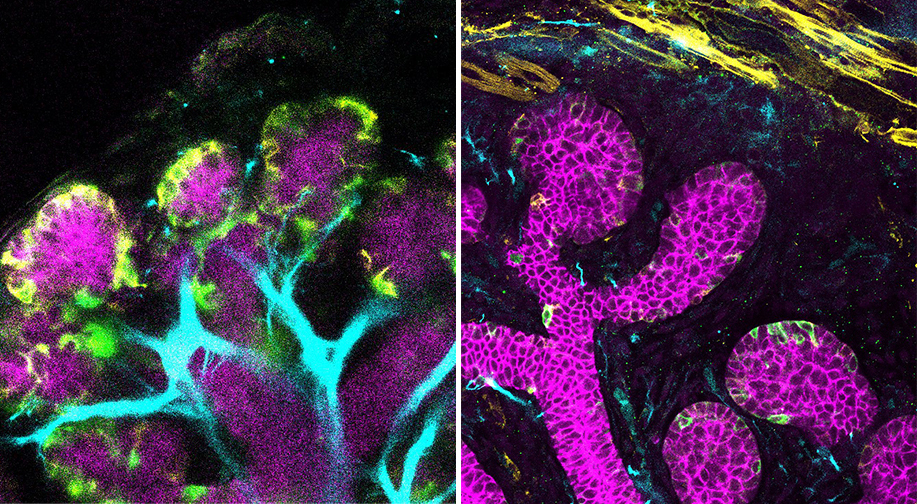Research Quick Pics
Think of a favorite food on an empty stomach—freshly baked chocolate chip cookies, maybe—and you’ll notice your mouth start to water. That's your brain signaling muscles and nerves around your salivary glands to make more saliva in preparation for a meal. A recent study by NIDCR scientists Rei Sekiguchi, DDS, PhD, Ken Yamada, PhD, and colleagues sheds light on the surprising diversity of salivary glands that emerges very early in development. Their findings may offer new insights for treating dry mouth and other salivary gland disorders.
Mammals have several types of salivary glands, and surrounding muscles and nerves help activate the right gland for the right purpose. For example, parotid glands make watery saliva full of digestive enzymes that help break down food. The submandibular glands produce thicker, mucous-rich saliva that keeps the mouth and teeth lubricated.
The research team found striking differences in muscle- and nerve-related gene activity, or expression, in embryonic mouse submandibular glands (above left) and parotid glands (above right). Muscle-related protein products from these genes are fluorescently labeled in yellow and green, and nerve-related proteins are labeled in blue.
These early gene and protein expression patterns echo differences seen later in adult salivary glands, according to the scientists. For example, adult submandibular glands probably need strong, local myoepithelial (muscle-like) contractions to expel their thicker saliva, which may account for the higher levels of myoepithelial-related genes during development. The NIDCR scientists say these findings could inform future efforts to target gland-specific molecules for tissue engineering therapies to repair damaged or diseased salivary glands.
Related Links
- Pioneering Gene Therapy for Dry Mouth
- Saliva & Salivary Gland Disorders
- Dry Mouth
- Sjögren's Syndrome
Reference
Single-Cell RNA-seq Identifies Cell Diversity in Embryonic Salivary Glands. Sekiguchi R, Martin D; Genomics and Computational Biology Core, Yamada KM. J Dent Res. 2019 Oct 23:22034519883888. doi: 10.1177/0022034519883888. [Epub ahead of print]. PMID: 31644367.
NIH Support: In addition to NIDCR, support for this study came from the intramural program of the National Institute on Deafness and Other Communication Disorders and the NIH Intramural Research Program.
Attention Editors:
Reprint this article in your own publication or post to your website. NIDCR News articles are not copyrighted. Please acknowledge NIH's National Institute of Dental and Craniofacial Research as the source.


